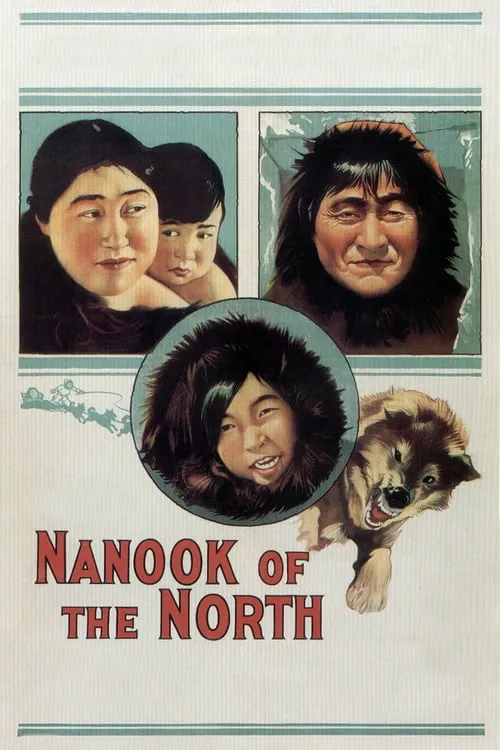Nanook of the North

Plot
Nanook of the North is a cinematic masterpiece released in 1922, a groundbreaking documentary film directed by Robert J. Flaherty that chronicles the lives of the Inuit people of northern Quebec, Canada. The film is a testament to the resilience and resourcefulness of the Inuit people, who have thrived in one of the most inhospitable environments on Earth. Shot on location in the Canadian Arctic, Nanook of the North offers a glimpse into a world far removed from conventional civilization, where survival depends on adaptability and ingenuity. The film's narrative centers around Nanook, the protagonist, a skilled Inuit hunter and provider for his family. The story begins with a montage of the Inuit preparing for the harsh winter months ahead. We see Nanook and his companions constructing their igloo homes from snow and ice, which would serve as their shelter from the biting winds and subzero temperatures. The camera work is meticulous, capturing the intricate details of the Inuit's daily lives, from the building of their homes to the preparation of their meals. One of the film's most striking aspects is its portrayal of the Inuit's hunting and fishing practices. Nanook and his companions set off in their kayaks, braving the icy waters of the Arctic Sea in search of seals and other game. The film's use of handheld camera work and natural lighting creates an immersive experience, putting the viewer in the midst of the action. We see Nanook expertly hunting a seal, using a harpoon to spear it in the water, and then struggling to drag it back to shore. The film also captures the Inuit's fishing practices, which are equally fascinating. We see Nanook and his companions using nets to catch fish in the icy waters, as well as using hooks to catch char and other species. The scenes are interspersed with shots of the Inuit preparing their meals, which are often raw and unprocessed, a testament to the harsh realities of life in the Arctic. In addition to its portrayal of the Inuit's daily lives, Nanook of the North also offers a glimpse into the beautiful, if unforgiving, landscape of the Canadian Arctic. The film's cinematography is breathtaking, capturing the vast expanses of snow and ice that stretch as far as the eye can see. We see the Inuit navigating their kayaks through icebergs and glaciers, and even witness a meteorological event – a blizzard – that showcases the raw power of nature. While the film does contain some fictional elements, it is ultimately a sincere and authentic portrayal of the Inuit way of life. Flaherty worked closely with his Inuit co-stars to ensure that the film was accurately representative of their culture and practices. The film's narrative is also intentionally structured to allow the viewer to experience the Inuit's daily lives, rather than simply observing them. One of the film's most significant contributions to the art of documentary filmmaking is its use of observational filmmaking techniques. Nanook of the North eschews traditional narrative structures in favor of an immersive, experiential approach. The film's use of natural lighting and handheld camera work creates a sense of immediacy and intimacy, drawing the viewer into the world of the Inuit people. This approach also allows the viewer to experience the Inuit's lives as they would have experienced them, rather than through the lens of cultural intermediaries. In the end, Nanook of the North is a landmark film that offers a profound glimpse into the lives of the Inuit people. It is a testament to the resilience and adaptability of the Inuit, who have thrived in one of the most inhospitable environments on Earth. As a work of cinematic art, Nanook of the North remains significant to this day, influencing generations of filmmakers and shaping the art of documentary filmmaking in ways that are still felt today. The film's portrayal of the Inuit way of life may have been made over a century ago, but it remains a powerful and poignant reminder of the human capacity for survival and community, no matter where we may find ourselves in the world.
Reviews
Recommendations




